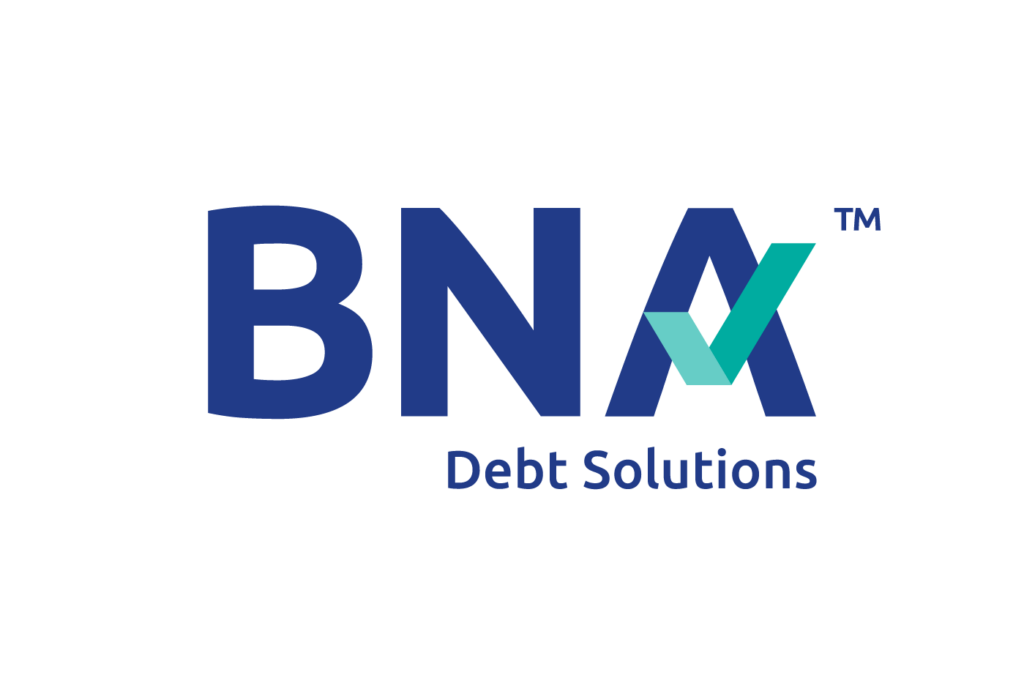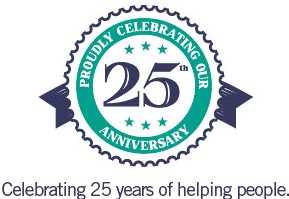When facing overwhelming debt, it can feel like there’s no way out. Even if bankruptcy is on the table, it doesn’t mean starting from zero. The law ensures you can keep essentials—like some of the value in your home, car, or everyday belongings—so you can rebuild with dignity.
At BNA Debt Solutions, we’re here to guide you through this difficult time. We’ll help you understand your options, whether it’s bankruptcy or another solution, and ensure you know what assets you might be able to keep. Let’s work together to find the best path forward and protect what’s important to you.
Bankruptcy: Let’s Talk About Your Options
When you declare bankruptcy, you’re saying that you can no longer afford to pay your debts. Bankruptcy is a legal process that allows you to get a fresh start by eliminating most of your unsecured debts. However, there are a few things to understand about what happens to your assets during bankruptcy and how you can protect them.
Even in bankruptcy, not everything is lost. Canada has a system of “exemptions”, which means that certain assets are protected, and you don’t have to give them up. These exemptions vary from province to province, but the basic idea is the same: You can keep some of your most essential belongings, like your home and vehicle, up to a certain value.
What Do Exempt and Non-Exempt Assets Mean?
Under the Bankruptcy and Insolvency Act (BIA), bankruptcy exemptions are designed to protect specific assets, such as your home, vehicle, and tools of the trade, so that you can maintain the necessities of life while discharging your debts. Provincial laws determine these exemptions, which allow individuals to retain essential items while filing for bankruptcy.
- Exempt property, also referred to as property declared exempt, is protected under bankruptcy law. This means you can retain these assets during the process, as long as their value doesn’t exceed the exemption limits set by provincial laws.
- Non-exempt assets are items that can be seized, sold, or repurchased by you as the bankrupt, to help pay off your creditors.
Knowing the difference is key. In some cases, if you have non-exempt assets, you might end up losing them during bankruptcy. But that doesn’t mean you’re out of options. If you have valuable assets, a consumer proposal could be a smarter choice, as it allows you to keep your belongings while still managing your debt.
What Happens to Your Assets After Declaring Bankruptcy?
1. Equity in Your Home
Your home is often the most significant asset you own, and bankruptcy doesn’t automatically mean you’ll lose it. Each province has different home equity exemption limits:
- Alberta: Up to $40,000 in home equity is exempt.
- Ontario: Up to $10,000 in home equity is exempt.
- British Columbia: Either $9,000 or $12,000 based on your location.
If your home’s equity exceeds these limits, you may have to repurchase the excess value or sell your home. However, a major challenge is that home values can fluctuate during bankruptcy. If your home’s value increases, your repurchase cost may rise, making it harder to retain ownership.
Filing a consumer proposal is often a better option to avoid these fluctuations. Your repayment terms are fixed and will not be affected by changes in asset values, offering a clearer financial path.
2. Non-Exempt Vehicles
Vehicle exemptions also vary based on your location. Generally, you are allowed to keep one motor vehicle up to a specific dollar limit.
In Alberta, for example, you can retain up to $5,000 in equity in your vehicle. If your vehicle is leased or financed, different rules may apply. However, if the value of your vehicle exceeds the exemption limit, it will form part of the bankruptcy estate and could be sold to satisfy financial obligations to unsecured creditors, or you may elect to repurchase the excess equity to retain ownership.
3. Surplus Income and Financial Windfalls
During personal bankruptcy, the government sets income thresholds based on household size. If your income exceeds this limit, you are required to pay 50% of the excess amount as surplus income payments to your creditors. The amount you pay can fluctuate if your income changes or if you receive a bonus.
If you receive a financial windfall, such as an inheritance or lottery winnings, these will be seized to pay off your creditors. However, by filing a consumer proposal, you can avoid concerns about surplus income or windfalls affecting your payments.
For example:
- The monthly guideline for a family of 2 is $3,249, and your income is $4,500; you will have to pay 50% of the $1,251 excess ($625.50 per month) as surplus income.
- If you get a bonus over and above your usual income, you would also be required to pay 50% of that into your bankruptcy.
4. Investments and Savings
Most RRSPs, RESP’s, RRIF’s, and LIF’s are protected in bankruptcy, however any contributions made in the last 12 months may be scrutinized by the LIT or the Court as an attempt to protect assets prior to bankruptcy.
If you have significant savings in non-registered investments, such as stocks or mutual funds, they may need to be liquidated unless you qualify for an exemption.
5. High-Value Personal and Luxury Property
Everyday personal belongings, such as clothing, basic furniture, and household items, are usually protected in bankruptcy. However, luxury items like expensive jewelry, artwork, antiques, or collectibles may be seized and sold if they exceed the exemption limit.
In most cases, wedding rings and necessary medical equipment are protected under provincial exemption laws.
Bankruptcy Doesn’t Mean Losing Everything: Here’s What You Can Keep
To give you peace of mind, here’s a general list of assets you can usually keep, along with their approximate exemption amounts (based on Alberta’s guidelines):
| Asset/Property | Exemption Amount | Notes |
| Principal Residence | $40,000 in equity | Property you reside in, does not apply to rental properties. |
| Vehicle | $5,000 in equity | One vehicle per person for personal use. |
| Tools of the Trade | $10,000 in equity | Equipment is essential for earning income (e.g., work tools). |
| Household Furniture | $4,000 total | Basic household items like furniture and appliances. |
| Personal Effects | $4,000 total | Clothing, jewelry, and personal items. |
| RRSP/RESP Contributions | All contributions (exempt) | Protected for retirement and education purposes. |
Even though these exemptions exist, if your asset exceeds the cap, the LIT may require you to buy back the non-exempt portion or surrender the asset.
The Hidden Costs of Bankruptcy
While bankruptcy offers a fresh start, it’s important to recognize the hidden costs that may come with it:
- Uncertainty with Asset Values: The value of your assets, especially your home, can fluctuate during bankruptcy, which means the amount you need to repurchase your home (or other assets) could change over time. This creates additional stress, especially when the amount owed can increase if the market value appreciates.
- Impact of Surplus Income: Your income can also affect the duration and cost of your bankruptcy. For instance, if you receive a bonus or raise your surplus income, payments could increase by 50% of that, making your payments higher than initially expected. These fluctuations can add unexpected financial pressure, which is another reason why filing a consumer proposal may be a more predictable solution.
- Extended Duration of Bankruptcy: If you have to repurchase assets, bankruptcy can last longer than the typical 9–21 months. In some cases, it can last 6–7 years, creating additional uncertainty and stress.
The Buy-Back Option: The Key to Protecting Your Most Valuable Assets
When you’re going through bankruptcy, it can feel like you’re making a big sacrifice, especially when it comes to your most valuable possessions, like your home or car. But there is an option to help you keep these assets, even if their value exceeds the exemption limit. This is called the buy-back option.
How Does the Buy-Back Option Work?
In the bankruptcy process, some of your assets might need to be sold to pay off your debts. However, if their value exceeds the exemption limit, you may have the opportunity to buy them back. Here’s how it works:
- Assessment of Your Assets: A Licensed Insolvency Trustee (LIT) will assess the value of your assets. If your assets are worth more than the exemption limit, you can choose to buy back the excess value to keep them.
- Repurchase Payment: For example, if your house is worth $100,000 and the exemption limit is $40,000, you would need to pay $60,000 to keep your home.
- Role of the LIT: The LIT will support you throughout this process. If buying back your assets feels challenging, they will explore other potential options to make the process as smooth as possible.
Challenges to Consider with the Repurchase Process
The buy-back option is a helpful way to keep your valuable assets during bankruptcy. However, there are a few key considerations to keep in mind.
First, asset values can change over time. For example, if the value of your home or car increases, the amount you need to pay to keep it might go up as well. This means the total amount required for the buy-back can fluctuate, so it’s important to stay aware of these potential changes.
Second, repurchasing assets can be a long process. In many cases, it takes several years—often 6 to 7 years or even longer—to fully repurchase your non-exempt assets. While this timeline offers flexibility, it’s important to understand that the process can extend beyond what you might initially expect.
Lastly, if your income increases—whether through a raise, bonus, or other changes—it can impact your buy-back payments. While this may make the process more adaptable, it’s something to consider as your financial situation evolves.
Despite these factors, the buy-back option is manageable. It provides flexibility, allowing you time to adjust and make payments gradually. However, if the buy-back process seems complicated or uncertain, a consumer proposal might be a simpler choice. It allows you to keep your assets while offering fixed, predictable payment, and future increases in asset values or income have no bearing on your proposal terms.
Stay Ahead of Financial Setbacks: Why a Consumer Proposal is a Smarter Choice
- Keep Your Assets: You can keep your home, vehicle, and other essential items, unlike in bankruptcy, where non-exempt assets may be seized.
- Fixed Repayment Terms: Your payments are fixed and won’t fluctuate based on income or asset values.
- Less Time in Limbo: A consumer proposal typically lasts up to 5 years, a fixed, predictable timeframe.
- Lower Overall Payments: Creditors usually accept a portion of the total debt, making it easier to manage your finances.
A consumer proposal allows you to keep your home, vehicle, and other essential assets while making structured payments to your creditors. Unlike bankruptcy, where asset values and income fluctuations impact what you owe, a consumer proposal provides fixed repayment terms—giving you financial stability and peace of mind.
The Role of a Licensed Insolvency Trustee in Navigating Debt
Dealing with debt can be incredibly stressful, especially when you’re unsure where to turn. Navigating a consumer proposal or other debt solutions might seem overwhelming, but you’re not alone in this journey.
Licensed Insolvency Trustees (LITs) are here to support you and guide you through the process. With over 27 years of experience, BNA Debt Solutions has helped countless Albertans navigate these challenging situations.
As a family-owned firm based in Calgary, we pride ourselves on offering compassionate and transparent guidance. We prioritize your well-being and ensure you fully understand your options, whether you’re choosing bankruptcy or a consumer proposal. Our team at BNA works with integrity and respect, empowering you to make informed decisions while protecting your most valuable assets.
What to Consider Before Filing for Bankruptcy in Alberta
Filing for bankruptcy is a significant decision, one that can have a lasting impact on your financial future. In Alberta, like anywhere else, it’s important to approach this decision with a clear understanding of what it involves. While bankruptcy can provide relief from overwhelming debt, it’s not something to take lightly. That’s why it’s essential to make an informed choice by carefully considering all your options.
The Process of Filing for Bankruptcy in Alberta
The process of filing for bankruptcy in Alberta begins with meeting a Licensed Insolvency Trustee (LIT). The LIT is a key resource that will guide you through every step, from completing the necessary paperwork to officially filing for bankruptcy. They will help you understand the details, including the duration of the bankruptcy and any obligations you’ll have during the process.
Bankruptcy typically lasts 9 to 21 months for a first-time filing, though it can vary depending on your situation. It involves steps like assessing your assets, attending credit counselling sessions, disclosing your monthly financial information, and making payments based on your income. The LIT will ensure you understand the implications of each step so there are no surprises.
Consulting a Credit Counsellor for Expert Advice
Before deciding to file for bankruptcy, it’s crucial to seek expert advice. Credit counsellors are impartial professionals who can help you evaluate your financial situation and explore alternatives to bankruptcy. They will give you a clearer picture of your options, whether it’s a debt management plan, a consumer proposal, or something else. They can also help you understand important concepts like exemptions—assets that you may be able to keep during bankruptcy—and other debt-relief programs that might be a better fit for your situation.
Making the Right Decision for Your Financial Future
Making the right choice for your financial future is a big step, and it’s all about what works best for you. Whether bankruptcy or a consumer proposal feels like the right fit, it’s important to think about what matters most—keeping your home, reducing your debt, or simply feeling more in control of your finances.
At BNA Debt Solutions, we’re here to walk you through every option. You don’t have to make these decisions alone. We’ll guide you with care, making sure you understand everything and feel confident in the path you choose. Together, we’ll work to create a fresh start that works for you.
Frequently Asked Questions
Will bankruptcy eliminate all my debts?
Not necessarily. While bankruptcy can discharge most unsecured debts, child support payments, spousal support, and court fines typically remain after bankruptcy. These are considered survivable debts that you are still required to pay.
Can I lose my home during bankruptcy if it’s declared exempt?
If the equity in your home is below the exemption limit, it is considered exempt, and you can keep it. However, if the equity exceeds the exemption limit, your home may need to be sold to pay off creditors.
Are tax refunds protected during bankruptcy?
No. Tax refunds for the year you file (and sometimes previous years) will be sent directly to the LIT to pay creditors.
How long does bankruptcy stay on my credit report?
In Alberta, a first bankruptcy typically stays on your credit report for six years from your date of discharge. With time and responsible financial habits, you can rebuild your credit.
How does bankruptcy affect my ability to get a mortgage or loan in the future?
Bankruptcy may make it harder to get credit initially, but it’s not permanent. By rebuilding your credit over time, you can qualify for loans or mortgages again. An LIT can guide you on rebuilding strategies.
How do I choose the right LIT for my situation?
Look for a reputable and experienced LIT who listens without judgment and clearly explains your options. Trust and comfort are key—choose someone who makes you feel supported.




